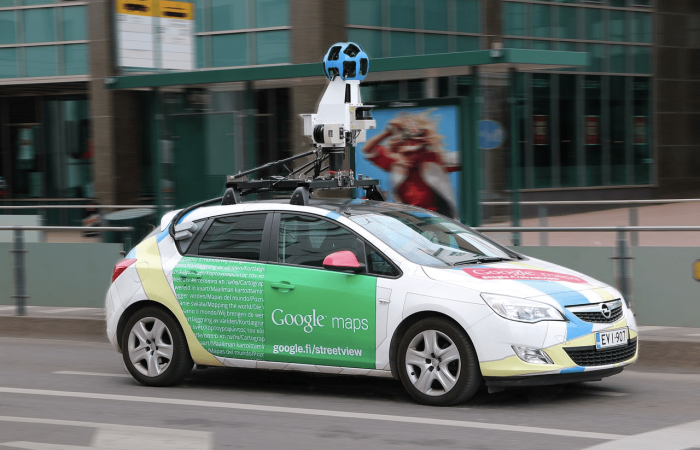As we leave 2020 behind and head into a hopeful 2021, let’s have a look at some of the cameras that will be helping to shape the future of cities and countries around the world. Check out our list of the best cameras for mobile mapping in 2021.
See the updated list for 2022 here –>
How, you ask, does a camera help to accomplish such a feat? The answer is that 360º cameras have already played a significant role, quite literally, in forming the way our towns, counties and cities are structured and how they operate. Surveying cameras are crucial for both mobile mapping and the more well-known street view feature on such sites as Google Maps and Mapillary.
Let’s take a quick look at what mobile mapping is and why it is so fundamental for governments, municipalities, logistics companies and even real estate companies.
What is mobile mapping?
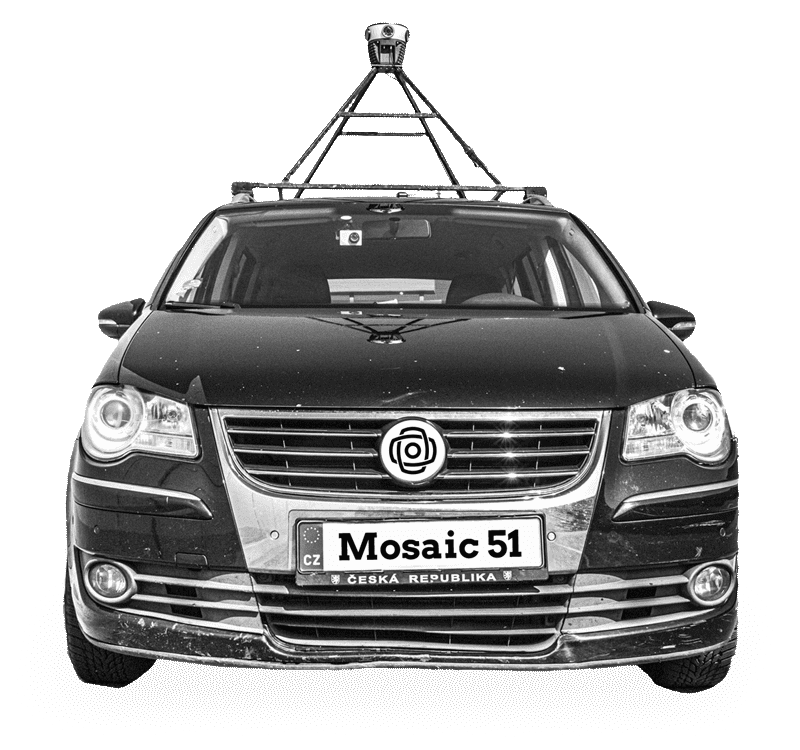
Mobile mapping combines the maneuverability of a vehicle with several technologies for the collection of geospatial data. Some of these technologies include GNSS, LiDAR, radar, laser and various other systems, usually combined within a camera-like device which can be mounted onto a mobile platform. Some devices come as a camera and separate workstation which accompanies the camera within the vehicle. As one study on navigation puts, it,
Mobile mapping represents a heterogeneous type of sensor integration consisting of navigation sensors as well as imaging sensors, altogether time synchronized and mounted on a common platform.
Through the use of mobile mapping, we can obtain digital maps (ones which are accessible on computers and smartphones, allowing the user to interact with it), GIS (geographic information system) data and georeferenced images and videos. But what does that mean for the average, everyday citizen? How is mobile mapping shaping our lives?
Applications of mobile mapping
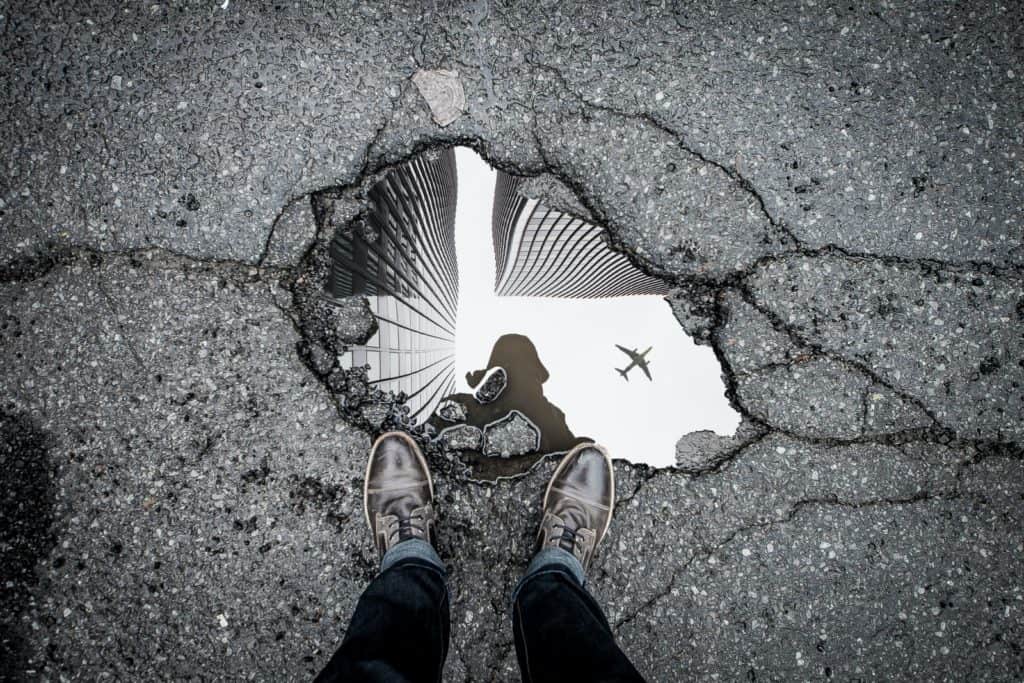
Photo: Marc-Olivier Jodoin
Mobile mapping has an incredible array of applications for governments at any level as well as companies of varying sizes and industries, all of which can trickle down and affect the daily lives of people and communities throughout the world. Some of the most common uses of mobile mapping is for the use of maintaining and updating street signs, discovering potential road damage such as potholes, and aiding in the decision-making process regarding flood management, the construction of green buildings and the use of solar power for a particular building.
Requirements for the most effective and best cameras for mobile mapping
With each new generation of camera on the market, the requirements become more and more specific and some of the current companies who are producing the technology for 360-degree mobile mapping have succeeded in incorporating most or all of these specifications into their products.
Research in the field of 360º mapping has concluded that there are some basic but essential needs. One such necessity is a robust, durable structure which can withstand harsh weather conditions and difficult terrain. Mobile mapping does, after all, take place on the top of a moving vehicle, which is traveling at considerable speeds, through cities, along rural roads, and (theoretically) in all sorts of harsh conditions such as extreme temperatures, rain and snow. The camera and its housing must be able to stand up to these conditions and not be taken down by a rainstorm or a pebble hurdling through the air.
Some automobile and autonomous car manufacturers are already on their way to creating High Definition (HD) mapping camera in-house solutions. Toyota is one of those companies. Their Vice President Automated Driving at TRI-AD, Mandali Khalesi, stated:
Currently automated driving map development relies on highly expensive specialized mapping vehicles deployed in limited numbers, and a lengthy manual process for reliable HD map creation.
However, these solutions are still reserved for larger corporations, such as Toyota and the like, who have the financial means and technical personnel to complete such a task. Another factor that must be taken into account when rating the compatibility of a camera is whether or not it is accessible and financially manageable to the end user. Compare the top 5 survey camera prices, specs, and more.
Below is a list of the best cameras for mobile mapping for 2021.
Top 5 Cameras for Mobile Mapping
1. NCTech iSTAR Pulsar Camera
Price: $3995 + processing fees per kilometer (camera is vendor-locked)
The NCTech iSTAR Pulsar and iSTAR Pulsar+ have been created and developed by NCTech, a tech-enabled big data company which focuses on high resolution imagery and LiDAR data. They promote their cameras as having automated edge-to-cloud processing and end-to-end solutions.

The Pros:
- 11k resolution
- 60.5MP
- Integrated IMU and GNSS sensors
- IP64
- Internal 256GB SSD
- Up to 7fps
The Cons:
- 6-axis IMU
- Vendor lock-in
- No high precision GPS
Conclusion:
The cameras are designed for HD mapping, but only partially fulfills the need for durability, reliability and ease of operation. Its IP64 rating means that it can withstand total dust ingress but only minor water spray from any direction.
They also lack some of the deep integration requirements such as 360 camera array, LiDAR technology and high precision GPS. It also does not have any on board graphical processing units (GPUs) which would allow for Edge AI applications directly on the camera.
The iSTAR Pulsar also does not possess the ability that all relevant HD map data be processed in one single unit nor for the initially captured data to be refreshed, meaning that maps will age and not be current or in real-time.
2. Ladybug 5 Camera
Price: $15,000
The Ladybug 5 is currently owned by FLIR (formerly Point Grey Research) and was once the most widely used camera in the market for 360° imaging. Many of its key features such as global shutter sensors, accuracy level of 2 mm at 10 m and 8K resolution were what helped make it a popular and sought after camera for surveying and street mapping services.

The Pros:
- 30MP
- No vendor lock-in
- IP65
- Calibrated from 2m and up
- 1 MB non-volatile memory
- Up to 14.5fps
The camera has been one of the more favored choices due to the fact that it is not locked into its vendor, allowing for more versatility in use, and making it ideal for governments and companies which already possessed their own software system for processing the data retrieved by the camera. And it also has a IP65 rating, which puts it above such cameras as the iSTAR Pulsar, in terms of durability.
The Cons:
- no IMU
- 8K Resolution
- no high precision GPS
The Ladybug 5 camera is promoted as providing a wide range of functionality, allowing users to record, process, and export spherical content with ease. However, while this might have been true several years ago when it was first developed and brought to market, now the Ladybug 5 is known to be difficult to use and the Ladybug price is consider fairly expensive due to the lack of upgrades in recent time.
The biggest and most blatant downside to the Ladybug 5 camera is the fact that despite being one of the front runners in the mobile mapping field, it has not been upgraded in quite some time, leaving current customers waiting.
Conclusion:
While it was once the best-in-class, and widely used, it has now been surpassed by its various competitors in every field and specification possible. Previous and current clients of Ladybug 5 are now on the search for a new camera which will replace their outdated technology.
3. Insta360 Pro Camera
Price: € 3,999
The Insta360 Pro is one of the top solutions for cinematic VR. It grants its users the ability to film and broadcast 360 and 360 3D images with an 8K resolution. It also possesses the capability of real-time stitching and preview.

The Pros:
- Low price
- 30fps
- No vendor lock-in
- IP65
- 11K Resolution
- H.264 compression
- Real-time image stabilization
The camera’s technology offers the ability for the user to quickly film, edit and share content such as on Google Street View.
The single biggest benefit it offers is its price. At only € 3,999, it is by far one of the most affordable cameras with 360 photo and video capabilities. However, as we will discuss, there is a reason it is so ‘cheap’.
The Cons:
- Low resolution
- No on-board GPU
- No built-in memory
- No high precision GPS
The single biggest drawback about the Insta360 Pro is its resolution. At only 8K it is among the bottom in its class. It also lacks many of the necessary features to make it a true 360 mapping camera. While it has dominated in the VR world in the last several years, its incorporation into surveying and mapping is an excellent example of ‘the wrong tool for the job.’
Conclusion:
The Insta360 Pro is much less durable than some of its competitors and does not offer the robust body frame that some of the other cameras on this list do. The 200º fisheye lenses are very prone to contact with objects in their environment, easily leading to damaged lenses; the lenses are not user-replaceable, which means that if you do have a scratched or otherwise damaged lens, you need to send the whole camera back to China for repair.
It is also not built as a single unit for all relevant HD map data, requiring many additional hardware add-ons as well as regular updates to the external software.
4. Mosaic 51 Camera
Price: contact sales for a quote
Mosaic 51 is a robust 360° camera for mobile mapping, street view, surveying, infrastructure inspection and related 360º imaging applications such as VFX & HDR light probes for CGI backplates.
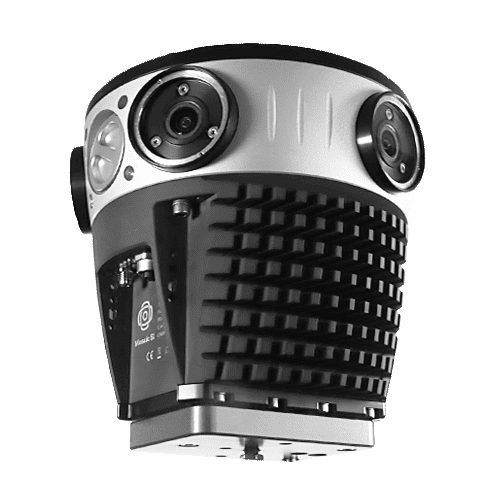
The Pros:
- No vendor lock-in
- On Board GPU
- 12K Resolution
- H.264 compression
- Connections for GNSS and IMU
The Mosaic 51 camera is a 360-degree camera which captures images with an all-in-one solution for image capture and processing. There is no need for an additional workstation within the car as is common with other similar cameras. It comes with an easy to install car mount that is ready to attach and start capturing images right out of the box.
With two onboard computers, a CPU and GPU, it has the potential for future edge-AI to detect personal identifiable information such as license plates and face which can later be blurred. This is extremely important for security and individual protection and also makes it the only GDPR-capable compliant camera currently on the market.
As another added security measure, the data collected by the camera can be encrypted so that not even the driver of the vehicle can access the information if so requested by the owners. With the increasing need for privacy protection, these two features really hit the nail on the head.
The camera was created to be used for professionals but is also capable of being used by untrained staff due to its removable, swappable storage and device and control via any web browser.
The Mosaic 51 is also the most durable camera, with an IP67 rating meaning that it can withstand dust entering the camera, as well as having sealed and water-resistant housing and waterproof connectors. The lenses have been built so that they are easily replaceable, so that any slight scratch will not incur a completely new camera or a servicing by the manufacturer.
The Cons:
- Mid to upper range in pricing
- Lacks a custom GNSS solution for millimeter accuracy
- External battery means that solution is not completely self-contained
The frame rate is currently up to 10FPS, so if you are interested in doing mobile mapping at extremely high speeds, then this camera is capable of one photo every four meters at 140km/h which might not be enough for some applications such as tree inspection – in this case it will be necessary to drive more slowly. Also there is no internal battery which means the camera is not completely self-contained.
Conclusion:
Mosaic 51 has answered nearly all of the pain points that many organizations are experiencing when conducting mobile mapping projects. The camera has all of the ideal features regarding durability with its protected lenses and industrial connectors, precision with its internal GPS, usability with its single removable storage and easy remote control operation, and reliability with its water resistant, long battery life. All of this translates into a camera that is the right tool for the job.
5. Cyclomedia Camera
Price: contact sales for a customized plan (data collection as a service)
Cyclomedia is a data collection company which specializes in capturing data from the real world and translating that into insight. They use their own internal automotive fleet of 44 cars which are equipped with their own in-house roof cameras with which they capture data for their customers, mainly in the Netherlands, but internationally as well.

The Pros:
- ArcGIS
- Street Smart API
- LiDAR point clouds
Cyclomedia cameras come equipped with a LiDAR scanner, making it capable of 360° spherical high-resolution panoramic images, which are geometrically accurate.
The results from their services are extremely advanced and of the highest quality, and among the most accurate and most thorough coverage.
Following data capture, Cyclomedia also performs data visualization and data insight, resulting in such outputs as the identification of lamp posts, traffic lights, traffic signs, road markings, trees and manhole covers. Such agencies as tax offices and insurance companies have benefited greatly from this information.
The Cons:
- No hardware offered
- Limited by car fleet
- Vendor lock-in
This service is generally well-received by its customers and is a nice neat package for those clients who possess the funds for such a service. However, due to their limited number of equipped vehicles, there is the issue of efficiency and the logistics as the company is primarily situated in the Netherlands. These circumstances do not make it particularly easy for companies or governmental organizations to acquire the cameras nor operate them as per their needs. Rather, they are tied to the availability of the automobiles and any time restraints from other bookings of the cars.
Conclusion:
For companies or governments that are looking to conduct a brief but highly precise mapping of a particular area, they will not regret using Cyclomedia. They deliver some of the best data and data insight out there. Their work is a cut above the rest for those who can afford the service and who do not need regular updates or real-time images of the space in question.
Competitive Matrix for the Best 360º Mobile Mapping Camera
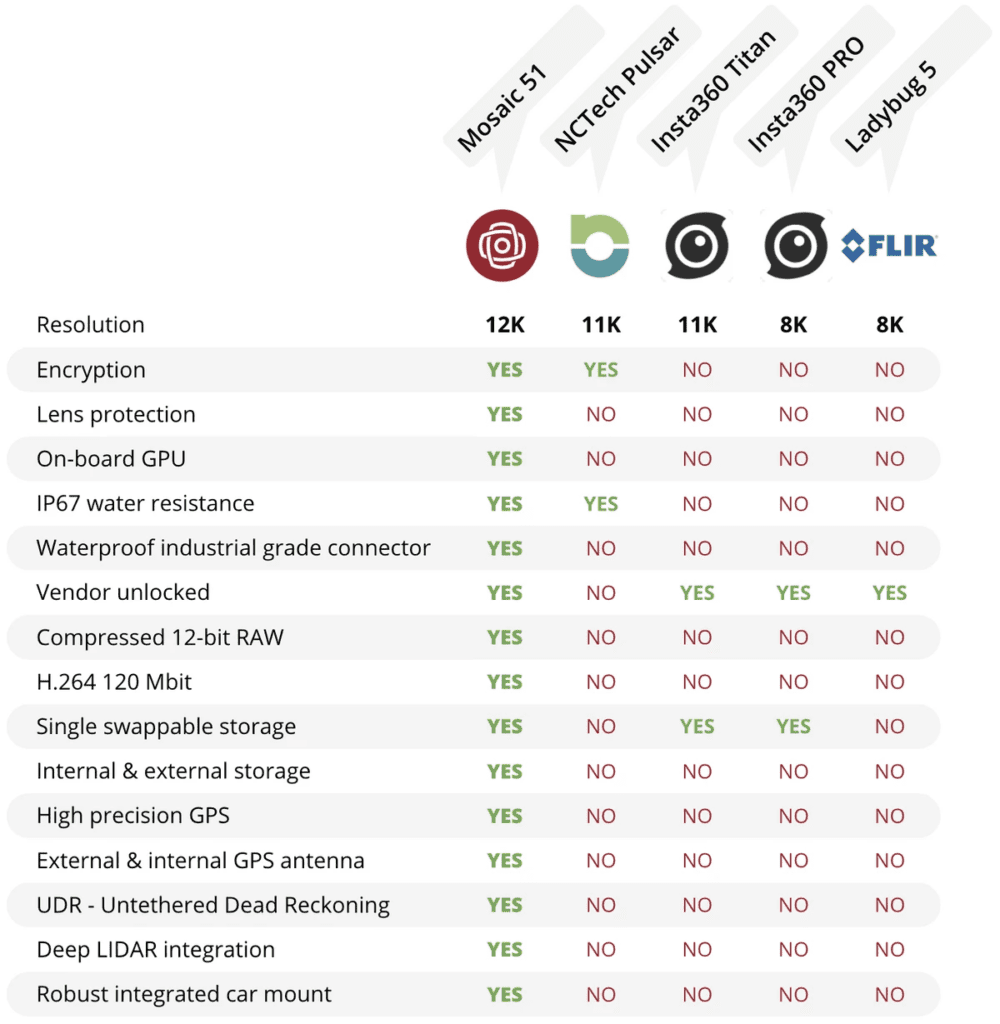
Taking into account the necessary features that make an durable, user-friendly and precise mapping camera – one which is built specifically for the very intention of mobile mapping, there is one clear winner…….
And the winner for best mobile mapping camera is: the Mosaic 51
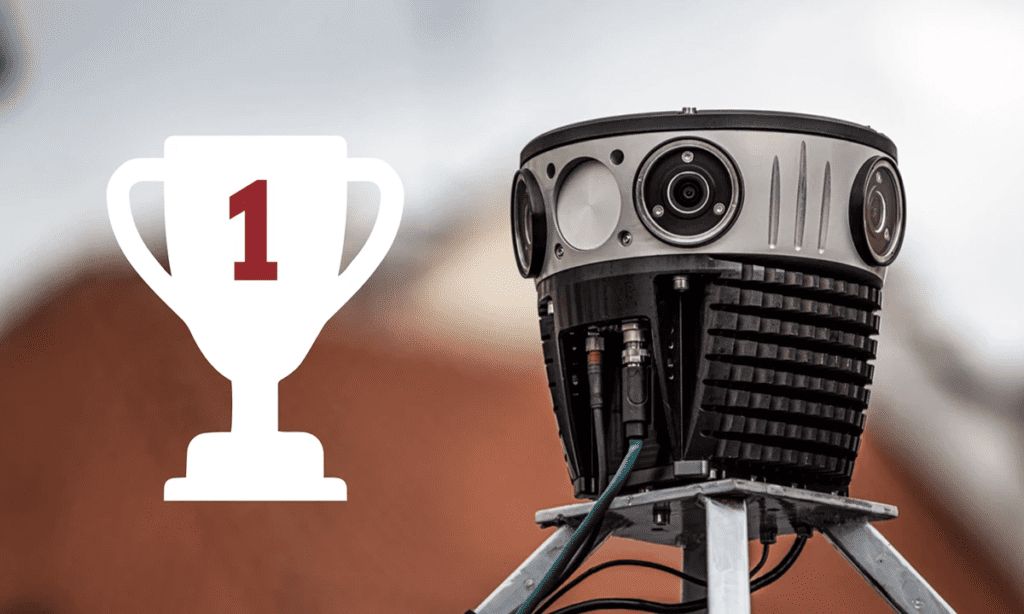
The Mosaic 51 is truly the only camera in its class that was purposely built with the intention of being a HD 360 image capturing camera for surveying and mobile street mapping. It takes into account the need for a rugged, robust frame which can handle any harsh environment or tough terrain. It meets the necessary level of durability, reliability and ease of operation.
It also contains deep integration of camera data feeds such as 360 camera array, LiDAR, and high precision GPS. The modularity of the design allows for an initial capture followed up by refreshing of data to keep maps as real-time as possible.
It allows any company, any government or any individual to buy a camera and start recording 360-degree images at the highest quality and ease and with the least amount of hardware, software or problems.
So if you are in the market for the best camera for mobile mapping for your town, city, or company, be sure to contact Mosaic to find out how you can find the solution to your needs.

